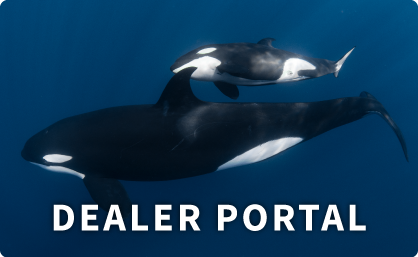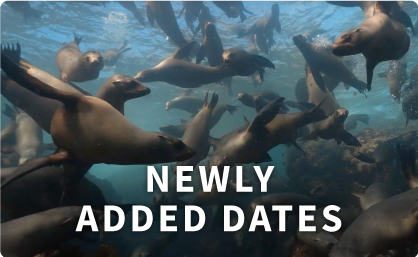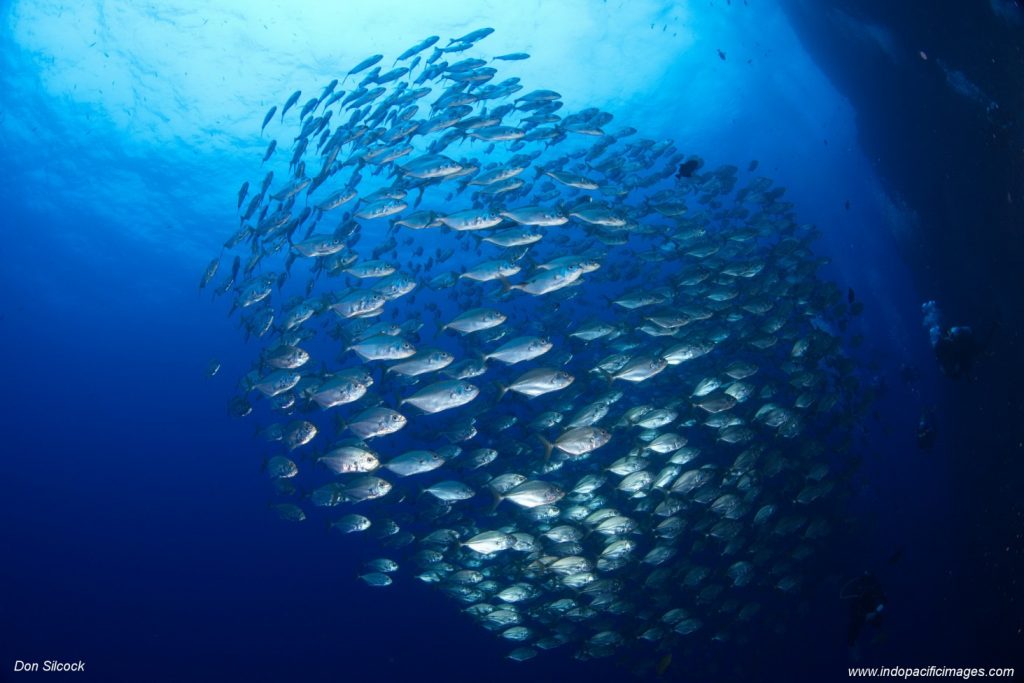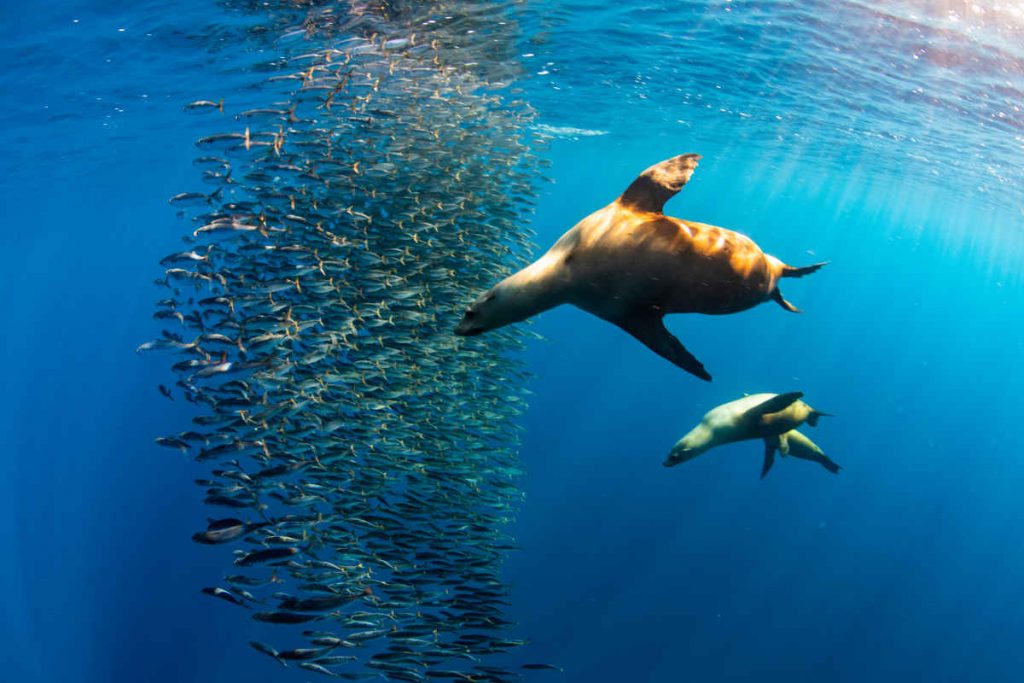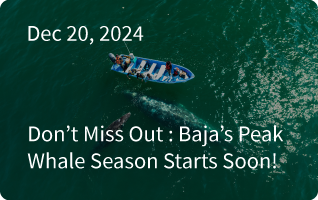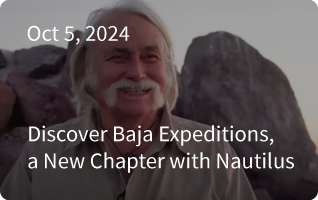We are having our best season yet on the Mexico sardine run with non-stop action 20 miles off the coast of Magdalena Bay, Baja, Mexico.
Photo https://www.youtube.com/@TheMalibuArtist
Many of this year’s guests are already booking another adventure to witness the Sardine Run. And our dive guides are competing to get on the crew schedule for these trips next year. See what some of our guests had to say about their crazy awesome experiences this year.
Mexico Sardine Run?? Huh?? What? Isn’t the sardine run an incredible phenomenon and experience off the west coast of Africa? Well, yes, it is. However, here in Mexico, we have our unique sardine run that’s equally spectacular. Let’s dive into the details and discover the captivating world of the Mexico Sardine Run!
The popularity of the Mexican Sardine Run is exploding. What started with a couple of professional filmmakers chartering a local panga 30 years ago has morphed into one of the most popular diving destinations in Baja. Well, it’s more of a snorkeling and freediving experience than traditional diving, but you get the point.
The old days of driving from Cabo San Lucas to San Carlos and staying in a local motel before a long panga ride out to the action every morning are over. With our full-size ocean-going liveaboards, it’s an easy late afternoon board in Cabo. Enjoy cocktail hour and dinner as we sail into the sunset. Get a good night’s sleep and wake up the next morning in the heart of the Mexico Sardine Run magic.
The occurrence of the sardine run is closely linked to deep ocean upwellings in specific regions, with one of these being the super nutrient-rich waters off Magdalena Bay, which represents the southern range of the Pacific sardine. Magdalena Bay serves as one of the three key sardine spawning areas along the West Coast thanks to the upwellings that bring an abundance of nutrients to the ocean’s surface. These upwellings occur specifically along the continental shelf, situated about 20 miles off Magdalena Bay in Mexico. Furthermore, the favorable water temperatures in these regions create an environment conducive to the formation of large sardine schools.
Interestingly, the Pacific sardine (Sardines sagax) is a migratory fish that roams up and down the west coast of North America, venturing as far north as Alaska during the summer when North Pacific waters are at their warmest. They then aggregate further south as the ocean water cools off. The older and bigger the sardine, the further north they might venture. Young sardines do not stay with their mothers, and we know very little about what juveniles get up to in their first year of life. It’s worth noting that one female sardine might spawn 65,000 eggs at once and up to 200,000 eggs per season.
The Mexico sardine run occurs from October to February off Baja as these beautiful, lithe fish with iridescent silver scales gather in large schools to protect themselves from predators. We believe that the protection comes from predators being unable to focus on a single sardine in a big swirling school.
What a marvelous day to begin our second day of bait ball hunting. The sun was out, the seas were calm, and all eyes moved between the sky to look for birds, and the water to spot other marine life. The mobula rays were jumping out of the water, high in the air to entertain us as we looked for the first bait ball of the day. We saw several groups of sardines and were very active today.
We saw some sea lions on the bait ball and observed them spinning around.We heard other pangas watching a small whale on the bait ball but by the time we got there, we were too late and only spotted the back. The anticipation was high and excitement palpable. What would I see next? Dolphins! A pod of dolphins swam around us and seemed entertained by the wake from our boats.Unfortunately, we did not see a huge amount of bait ball action and we were about to head back to the boat when our panga captain throttled forward, changed directions, and off to the races meeting a family of humpback whales! For the next several hours, we watched the whales and counted around 7! The adrenaline was pumping and the boats took turns to have passengers jump in hoping to catch a glimpse of these beautiful creatures.
I ended up losing a fin but the sacrifice to the deep blue ocean was a fair price to pay to swim with the humpbacks. More tomorrow!
Deborah- Houston , Texas
(…) After breakfast, at 630, we started the activity with the pangas.It was another amazing day. We could jump with 5 humpback whales in the morning. After that we spotted a group of common dolphins but we could not see them underwater..Then we had a static bait with mahi mahi, a few marlins, sea lions and even two very curious silky sharks. We spent like three hours with that bait!!! The way back today was hard. Conditions were not helping and it took us 3 hours 15 minutes to return to the camp. We arrived at the camp at 17:20. The crew was waiting with aguachiles for a sort of cocktail hour. People are happy but tired. We spent almost 11 hours at the panga. It’s worthy but at the same time a lot for the guests. I think that including one day of diving in Los Islotes would be a nice closure for this adventure. I hope we can make it happen. (…)The diving experience is not even among the group. I believe Los Islotes is the perfect spot to make experienced divers and non experienced divers happy. Tomorrow we will do the same schedule(…)Dinners are super.
Celine
The encounter with whales in Magdalena Bay Mexico is another of the charms that can be observed in this area. These magnificent marine giants choose the bay as a stop on their migration route, offering a natural wonder for nature enthusiasts.
Today was an amazing day! It was the first day I had ever seen a whale eating a baitball!!
Dani.
My team and I were right about to jump into the bait ball when the captain said one! two! And when he was about to say three and we were suspended in the air we saw the Bryde whale breaching out of the water eating the bait ball and then we saw it leaving. It was a very unexpected and amazing moment that I will never forget.
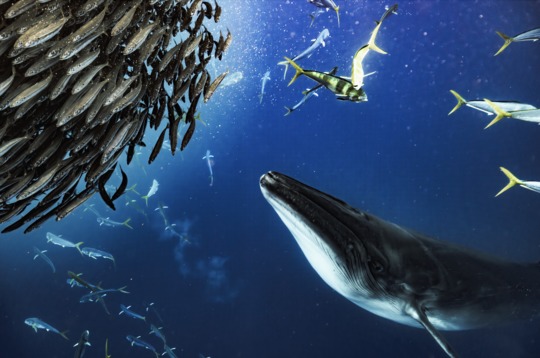
While the sardine run can protect individual sardines against their predators, the entire school is constantly under the threat of various predators. This includes giant Bryde and humpback whales, which gulp down giant mouthfuls of prey, as well as beautiful marlin speeding through the school at speeds of up to 50 km/h. Other threats come from sea lions, dolphins, mahi-mahi, cormorant birds, sharks (especially silky sharks), turtles, and even giant sunfish joining the act. It’s a breathtaking spectacle, and while we feel for the sardines, witnessing this display of life’s richness during the sardine run is truly incredible.
It’s the end of October and we are running trips in Magdalena Bay. Today we went out looking for bait balls and after over an hour of search, the captain spotted something in the distance. As we approach we see that it’s a horde of sea lions!!We jumped with them, they were so playful! About 50 of them, leaping out of the water and swimming around us, looked very curious. It was a high adrenaline moment, just as we like it!!!
Eline
The Mexico Sardine Run is mind-blowing and exciting. You just have to be careful not to get accidentally swallowed by a Bryde whale gulping through a mass of sardine. Okay, we are kidding, and to be pragmatic, the throat of one of these giant whales is only as big as your arm, so they couldn’t swallow you even if they tried. The point is that experiencing the Mexico Sardine Run is rapidly gaining popularity and has become a must-do experience for divers in the eastern Pacific.
If you are seeking adventure and exploration, come visit Magdalena Bay, to discover its natural beauty, the super-nutrient-rich waters that provide the perfect locale for our Mexican version of the Sardine Run, and the marine biodiversity. Experience firsthand the beautiful Mexican Sardine Run, witness colorful Mahi-Mahi, playful sea lions, and much more.
Your Magdalena Bay Adventure Trip awaits. Let yourself be captivated by its natural richness.

